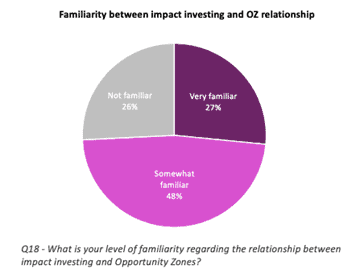
As activity in the commercial real estate industry continues to rise, commercial lenders are seeing more requests for construction loans, acquisition loans, and refinances. But what kind of properties are developers and investors most interested in? Why are investors so interested in commercial real estate? And what do commercial lenders consider when deciding whether to approve a financing request?
Illinois Real Estate Journal turned to Dan Charleston, Vice President at Colliers Mortgage, and Patrick Tuohy, Senior Vice President at Marquette Bank, to find out.Illinois Real Estate Journal: Are you still seeing a steady stream of financing requests for commercial financing? If so, are you seeing mostly acquisition or development requests?
Charleston: Colliers Mortgage is primarily active in the multifamily business, including Agency lending and community bank lending platforms. Quoting activity is still robust despite higher interest rates, but deals are getting harder to underwrite. We have been seeing both acquisition and development requests, as well as refinancing requests. On the acquisition business, loans are more commonly constrained these days by DSCR (Debt Service Coverage Ration) metrics rather than LTV/LTC forcing borrowers to bring more equity to a transaction. With interest rates having moved from the mid to high 3% range to the high 4% and low 5% range on stabilized apartment assets, the math just gets harder on acquisitions. And on development loans, there is a fair amount of uncertainty about construction costs. On refinancing activity, owners who are interested in keeping their assets longer-term are finding attractive loan proceeds based on values today.
Tuohy: We are still seeing a steady stream of acquisition transactions in multifamily as well as the other asset classes. New development in multifamily has slowed down due to construction costs but there are still a number of new multifamily properties under construction and just breaking ground. Current inflation cost to replace and add new apartment stock has made “quality affordable housing” in the class “B” and “C” very attractive for owners/operators and investors both local and out-of-state operators and investors. Chicago has been on the radar screen for some time for out-of-state investors and continues to be a value play compared to the East and West Coast including Florida and Texas.
Illinois Real Estate Journal: For which commercial sectors are you seeing the most financing requests? Why are those sectors so hot right now?
Charleston: We are particularly active in the Affordable Housing, Market Rate Housing, Seniors Housing, and Manufactured Housing spaces right now. All of the most active multifamily spaces are seeing especially strong rental growth and investor demand due to their ongoing strength and performance both pre and post-pandemic. Agency lenders such as ourselves are also seeing a lot of activity around Affordable housing efforts in all markets nationwide. Our clients are actively seeking acquisition and development activities given the strength of housing markets and the demand for both affordable and market-rate housing.
Tuohy: Over the past year a significant increase in the number of owner/operators and investors have opted to retire/sell and trade into class “A” and class “B” single tenant triple net 1031 exchange investments. Depending on the submarket and tenant mix, e-commerce and changing work/life demands continue to put pressure on retail strip centers and office properties resulting in accelerated vacancy making underwriting these properties a challenge. For exchange buyers, triple net class “A” and “B” retail single tenant is very strong with available product limited. This has compressed CAP rates in the low to 5% range.
Illinois Real Estate Journal: What are investors so interested in investing in commercial real estate? What makes it such a safe investment type?Charleston: Investments in the multifamily space create both current cash flow and value-added growth opportunities for investors as owners/sponsors, and for investors in mortgages, overall returns have been outstanding with significantly less volatility and risk than other asset classes in the current market environment. In light of what’s happening in the stock and bond markets today, the more predictable nature of real estate returns, especially in multifamily assets, is becoming even more attractive. Much of that has to do with the reality that the US needs millions of additional housing units to meet both current and future demand. Well-managed assets can create excellent returns in those types of conditions.
Tuohy: Over the past year the number of multifamily buyers far exceeds the available product in both Chicago and suburban submarkets. This has resulted in multiple offers on any single opportunity pushing values to a record high. I continue to see a decline in the number of listings over the past year which has made this market highly competitive and difficult for the smaller operators to compete and purchase. We continue to see an increase in the amount of out of state buyers who have moved from larger properties and are now competing for smaller properties using local management firms such as Peak Properties and Cagan Management to operate.
Depending on the submarket, astute owner/operators and investors are looking at rental rates running from 5% to 20% above current market rates giving the proforma opportunity justification to pay the current asking prices. There is an increased demand in the multifamily market for rental units that have been upgraded with new finishes and amenities in the class “B” and “C” submarkets. Higher rental rates justify improvements to existing rental stock. Single-tenant credit-based investments in the industrial submarkets have been red hot for the past two years and continue to be so.
Illinois Real Estate Journal: What factors do you look at when considering financing requests? Charleston: We are very focused on the strength of our sponsorship/borrowers, their experience in the market and asset class they’re looking to finance, and the quality of the project they’re proposing, both in terms of location and overall management strategy. The saying in real estate is often “location, location, location”, and that much is true. But in larger-scale commercial real estate investment, that should always be paired with “sponsorship, experience, and strategy”.Tuohy: Factors we look at include location and submarket strength, income and expense operating history, upside potential, exterior and interior asset condition, and operator experience and history.





